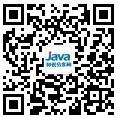| 失效链接处理 |
|
mongodb-4.2最新手册 PDF 下载
本站整理下载:
提取码:ea94
相关截图:

主要内容:
Introduction to MongoDB On this page Document Database Key Features Welcome to the MongoDB 4.2 Manual! MongoDB is a document database designed for ease of development and scaling. The Manual introduces key concepts in MongoDB, presents the query language, and provides operational and administrative considerations and procedures as well as a comprehensive reference section. MongoDB offers both a Community and an Enterprise version of the database: MongoDB Community is the source available and free to use [https://github.com/mongodb/mongo/] edition of MongoDB. MongoDB Enterprise is available as part of the MongoDB Enterprise Advanced subscription and includes comprehensive support for your MongoDB deployment. MongoDB Enterprise also adds enterprise-focused features such as LDAP and Kerberos support, on-disk encryption, and auditing. Document Database A record in MongoDB is a document, which is a data structure composed of field and value pairs. MongoDB documents are similar to JSON objects. The values of fields may include other documents, arrays, and arrays of documents.
The advantages of using documents are: Documents (i.e. objects) correspond to native data types in many programming languages. Embedded documents and arrays reduce need for expensive joins. Dynamic schema supports fluent polymorphism. Collections/Views/On-Demand Materialized Views MongoDB stores documents in collections. Collections are analogous to tables in relational databases. In addition to collections, MongoDB supports: Read-only Views (Starting in MongoDB 3.4) On-Demand Materialized Views (Starting in MongoDB 4.2). Key Features High Performance MongoDB provides high performance data persistence. In particular, Support for embedded data models reduces I/O activity on database system. Indexes support faster queries and can include keys from embedded documents and arrays.
Rich Query Language MongoDB supports a rich query language to support read and write operations (CRUD) as well as: Data Aggregation Text Search and Geospatial Queries. High Availability MongoDB’s replication facility, called replica set, provides: automatic failover data redundancy. A replica set is a group of MongoDB servers that maintain the same data set, providing redundancy and increasing data availability. Horizontal Scalability MongoDB provides horizontal scalability as part of its core functionality: Sharding distributes data across a cluster of machines. Starting in 3.4, MongoDB supports creating zones of data based on the shard key. In a balanced cluster, MongoDB directs reads and writes covered by a zone only to those shards inside the zone. See the Zones manual page for more information. Support for Multiple Storage Engines MongoDB supports multiple storage engines: WiredTiger Storage Engine (including support for Encryption at Rest) In-Memory Storage Engine.
In addition, MongoDB provides pluggable storage engine API that allows third parties to develop storage engines for MongoDB
|




 苏公网安备 32061202001004号
苏公网安备 32061202001004号



